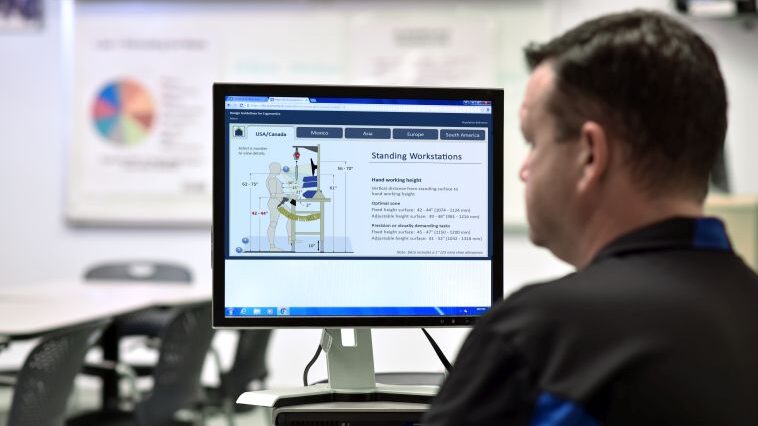Ergo U: University of Wisconsin–Madison: Effective Human-Robot Teaming
Posted on February 5, 2020 | in Ergonomics

In the series Ergo U: Ergonomics Research Notes from the Field, VelocityEHS Director of Research and Ergonomics Engineer Blake McGowan meets with ergonomics researchers from leading universities and associations across the country to share their latest findings.
Field notes
Recently, Blake met with Dr. Robert Radwin, the Duane H. and Dorothy M. Bluemke Professor, from the Industrial and Systems Engineering Department at the University of Wisconsin–Madison, to learn more about technologies that will reduce musculoskeletal disorders (MSDs) in the workplace.
Blake’s take
“Thank you to Robert Radwin from the University of Wisconsin–Madison for hosting me for the third time in the last four years. Rob, his colleagues, and his students are conducting some incredible research on technologies that will reduce MSDs in the workplace. Of most interest to me is the new research on ‘Effective Human-Robot Teaming to Advance Aviation Manufacturing.’ The research is funded by NASA – National Aeronautics and Space Administration (NASA ULI Award # 80NSSC19M0124), and Rob has partnered with colleagues Michael Gleicher and Bilge Mutlu from The Collaborative Robotics Laboratory (CoRL) in the Department of Computer Sciences and industry experts such as Christopher Reid from The Boeing Company. This type of technology is focused on reducing employee exposure to awkward postures and forceful exertions during complex manufacturing tasks. In addition, it may even be a better solution than hard exoskeletons to reduce MSDs, as collaborative robots are not associated with the same number of constraints and negative consequences.”
“In addition, Rob and his colleagues continue to enhance their computer vision technologies that automate the completion of the ACGIH Hand Activity TLV and the Lifting Equation. Their latest enhancement provides a robust, non-intrusive, straightforward approach to automatically extracting spatial and temporal factors necessary for the RNLE using a single video camera in the sagittal plane.”
Additional activities
Blake provided a lecture to fourth-year Industrial and Systems Engineering students on communicating the value of ergonomics to business stakeholders, which included hands-on activities to convey the value in a non-technical manner. Blake also hosted a discussion with members of the Human Factors & Ergonomics Society student chapter about industry opportunities and some key learnings on how to apply the principles of ergonomics in the workplace.
Expert
Professor Radwin’s (PhD from the University of Michigan–Ann Arbor) research focuses on the physiological and biomechanical aspects of work. He investigates how to better design jobs, equipment, tools, products, and environments in which people play a significant role, so that human capabilities are maximized, physical stress and fatigue are minimized, and work is optimized. He has numerous grants and contracts from government agencies, companies, and private foundations, and he is frequently a consultant to industry and government for ergonomics in manufacturing and product design. Professor Radwin is founding chair of the Department of Biomedical Engineering. He is a Discovery Fellow at the Wisconsin Institute for Discovery.